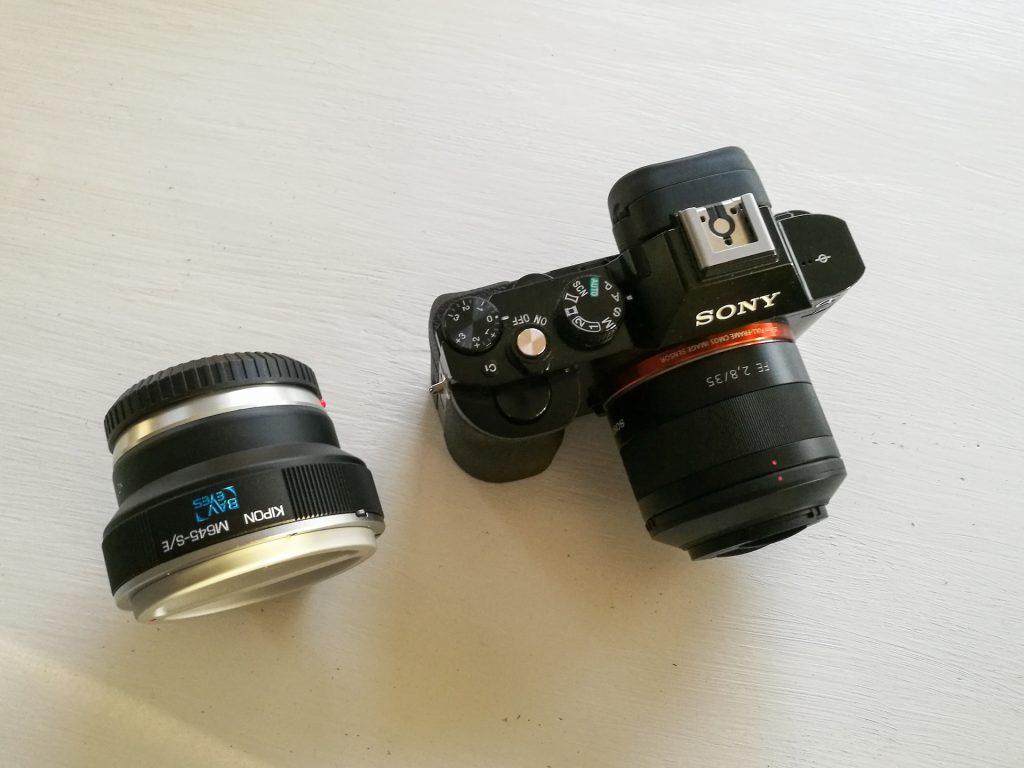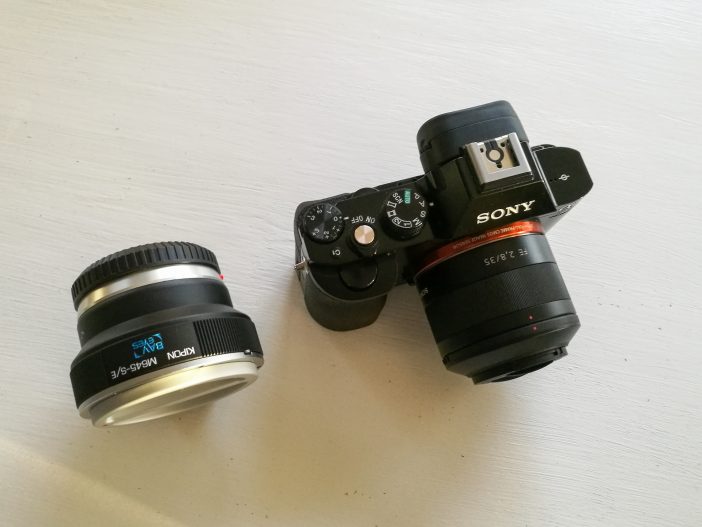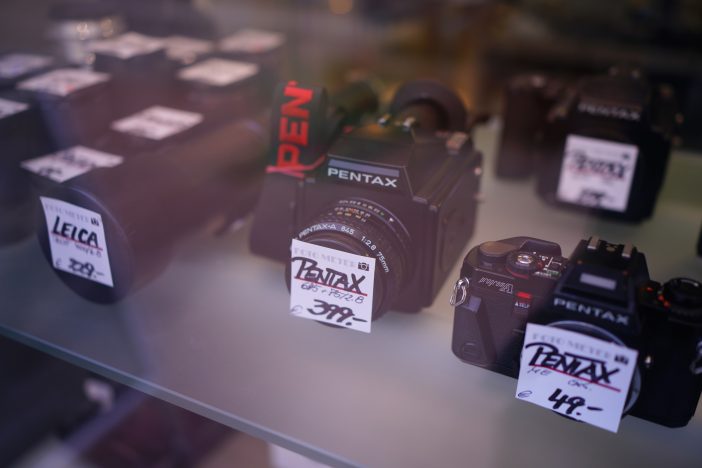Mattias Burling on the EOSHD Forum is giving us his impressions of the new Kipon / BavEyes medium format focal reducer for Sony’s full frame cameras.
If all goes well, this will give the prized medium format look on full frame.
Just as the Metabones Speed Booster on APS-C delivered the full frame look of our Canon and Nikon lenses, we now have a focal reducer for full frame sensors turning them into monstrous medium format backs.
To be clear, Speed Booster is the preferred way I like to shoot with crop sensors in general – especially Super 35mm and Micro Four Thirds. Could it become as common to use medium format glass on full frame sensors? Soon we’ll find out. I am going to get my hands on the adapter soon and you can follow Mattias’s findings here.
Of course, we don’t traditionally think of full frame as a ‘crop sensor’!
But it is indeed the case there are even larger sensors on the market.
One such sensor is the Sony 43x33mm 50MP CMOS in the Pentax 645Z, Hasselblad X1D and Fuji GFX 50s. I love the look these cameras give and have even toyed with the idea of getting a Pentax 645Z myself like Philip Bloom who certainly still enjoys his. Problem is it is a very expensive camera (£6000) with very poor video and the sheer bulkiness of it compared to the newer generation of mirrorless medium format cameras makes it a tad obsolete!
Sadly with the new Fuji GFX and Hasselblad bodies the cost factor remains a major obstacle for me, vs what they deliver. We are talking £6000 for the body and stupid money for lenses that hunt badly in AF mode. But the biggest deal-breaker for me is once again absolutely pathetic video quality. 50MP isn’t that unique for stills either… We have full frame cameras that shoot 50MP and 42MP respectively for less than half the price of a Fuji GFX! So the option to spend £400 on the medium formal focal reducer while maintaining 4K video and 42MP stills on a £2500 Sony body seems a lot more attractive to me.
Here we will be using classic medium format lenses and focusing manually. We’re also gaining a brighter F-stop due to the effects of the 0.7x focal reducer. Much better for low light than any medium format camera.
There are some exceptional medium format lenses in Hasselblad, Leica S, Mamiya and Pentax 645 mount. Some of them by Zeiss. Although the best lenses are mega-bucks, even some of the very cheap old Pentax 645 lenses like the 75mm F2.8 (usually £180) are very nice and prove that medium format lenses can be nice and compact.
Most interestingly though, the BavEyes focal reducer actually lets you see more of the image circle than the 50MP Sony sensor in the Pentax 645Z.
The image you see from the Kipon/BavEyes focal reducer is equivalent to a 53 x 40mm medium format back – not the smaller 43 x 33mm sensor in the Pentax 645Z and newer mirrorless offerings.
For me, medium format is all about 3 things – resolving power, minimising aberrations and the gentle focus roll off that comes from such a massive imaging area at F2.8 or F4. (With the Pentax 645Z it is also about the insane 16-stop dynamic range in the RAW files. Alas none of that niceness is present in video mode and the A7R II and A7S II are certainly no slouch in the dynamic range department).
What to look for
Beginners typically associate larger sensors with a shallower depth of field. Sharp subject, completely blurry background. Medium format is not about that. It is more about how gently the focus changes through the depth of the image, giving an incredibly three dimensional look. Composition is not just about where you position the camera X/Y, but how you compose on the Z axis as well, how the focus rolls off both in front and behind the subject.
With a very fast aperture on full frame, you tend to get a very steep and sudden focus fall off so that when the eyes are in focus, by the time you get to the ears they are completely blurred out. Portraiture with medium format lenses benefits from a more gentle, softer focus fall off where you can see deeper into the image while still maintaining a three dimensional feel.
Similarly with anamorphic lenses, I prefer it when the background isn’t completely creamed out and there is an ample opportunity to compose in terms of depth. Because most medium format lenses start at F2.8 and many are shot at F5.6 or F8, for landscape scenes, the corners are sharper on medium format lenses in general compared to having to open up a full frame lens to a fast aperture like F1.4 to get the nice depth rendering on a smaller sensor.
To be continued…
So to summarise – with medium format lenses we have fewer aberrations than using a fast aperture on full frame, with beautifully long, layered seperation between subjects at different depths in the frame, super sharp corners and high resolving power for 4K and beyond.
Add to that a range of lenses with character that you haven’t seen before on the usual modern full frame lenses. It’s going to be a fun shopping trip on eBay.
Let’s see if the German BavEyes optics in the Kipon ‘Speedbooster’ deliver.
Interestingly they make a Leica SL version as well, which makes a lot of sense because critical manual focus with this camera is much easier thanks to the fantastic EVF and shooting 120fps with the medium format look is a pretty unique proposition – try doing that on a RED Epic!
The adapters are available in the US only through Adorama (search ‘Kipon BavEyes’ for all mounts).






